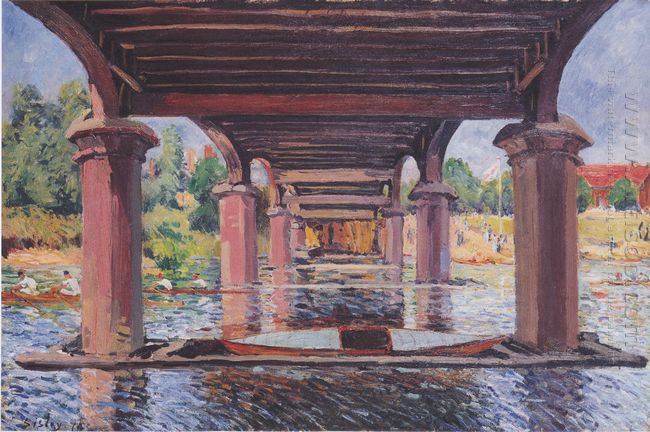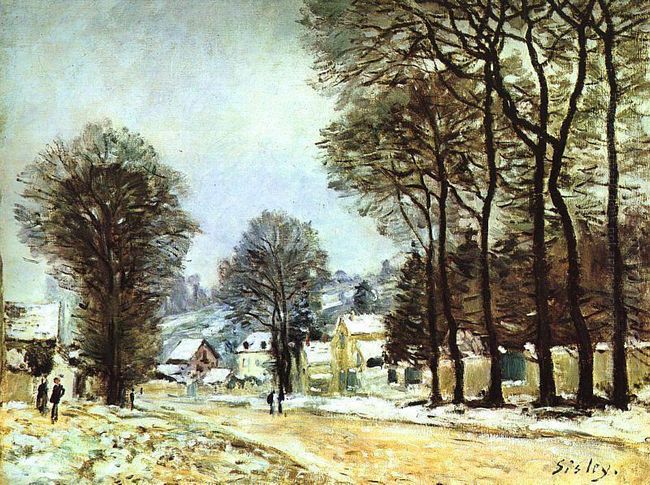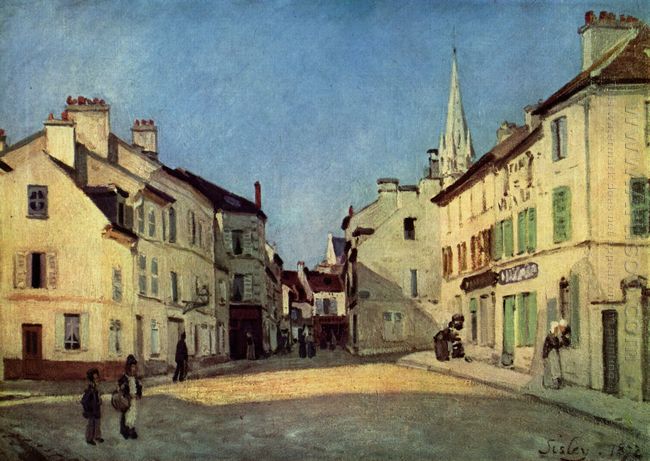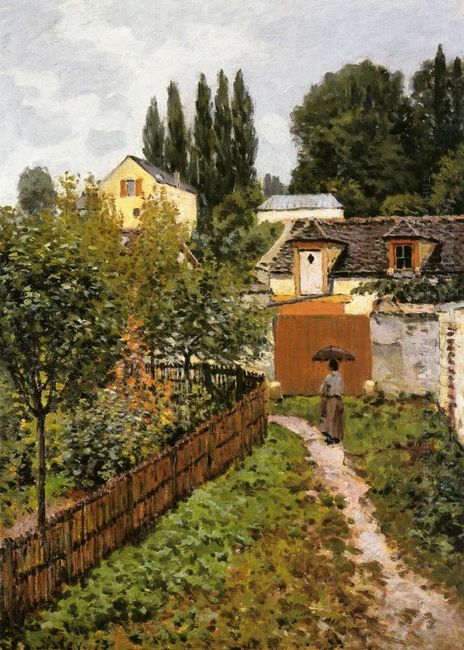The mid years of 1870s were the most successful stages of Alfred Sisley’s creation. In this period, he was optimistic that the innovation path of impressionist was correct. So he always unhesitatingly created paintings with enthusiasm. His works in this period had bright colors and constantly changing light effect. The biggest feature was that his works had the solid lines and elevation. During this period, the style of Pizarro was very close to Sisley, but Pizarro was simpler and rougher which was quite similar to Millet.
In 1874, Sisley created the famous Under the Bridge at Hampton Court in Britain. This work marked that the painter’s unique art style had matured. The sky, trees and water were portrayed so freely that it reached the degree of perfection. With the vivid strokes thin coating, collocated techniques and strong and rich colors, the painter shaped the distinctive artistic image. The sky was painted very broadly. The scene formed by the vigorous river, the vital trees, the floating clouds, the trembling leaves and the flashing water was like a joyful dance.
The work reflected that the painter paid attention to “form, color, painting effect” in landscape paintings to give the vitality of works. We were able to feel that the lyric characteristics of Sisley in creation were no longer delicate and elegant, but the fresh and clear glow and free energy. Impressionist painters were often keen to portray the snow and tried to achieve the strong color harmony from white and gray. And the snow scene of Sisley was splendid. He was not only good at obtaining the harmonious color from white and gray, but also easier to use color contrast to create a kind of joy and optimism.












